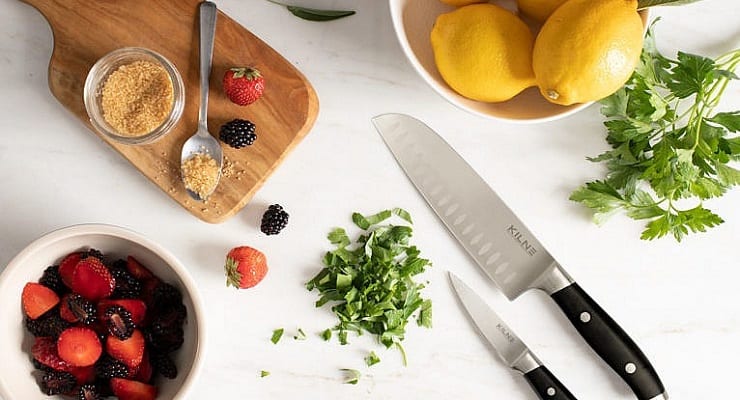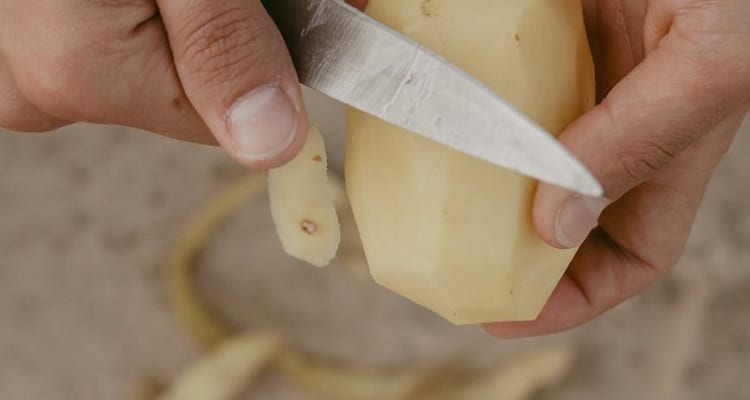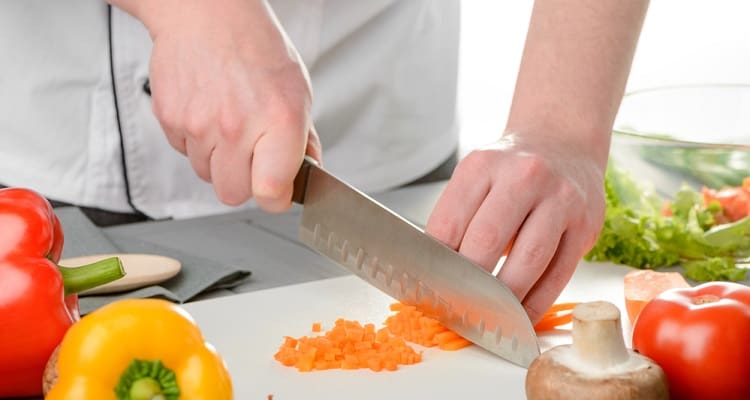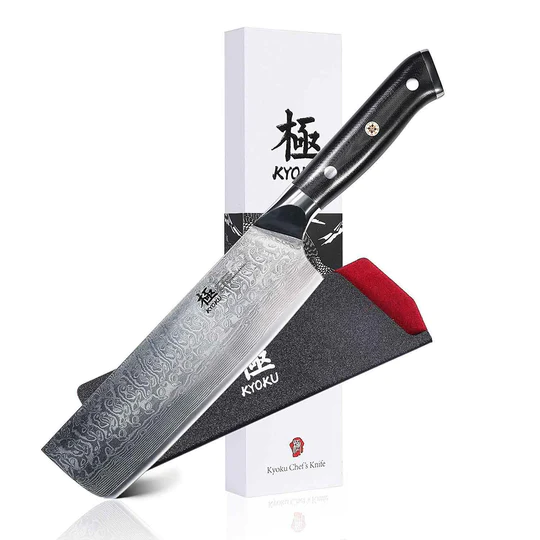


We all like to work with knives that are dynamic and lightweight enough for easy maneuvering. The paring knife and the Santoku have these attributes, but they are not perfect alternatives.
The Santoku is a versatile kitchen knife while the short bladed paring knife is best used for for cutting.
A paring knife is ideal for intricate cutting, slicing, and chopping vegetables, fruits, herbs, and prawns. The paring knife is typically short-bladed.
This knife is up to four inches long, the blade is often sharp, and it delivers more precise cutting than bigger knives. It is very versatile when it comes to peeling fruits, deveining prawns, and cutting up other soft regular kitchen ingredients.

What you should never use the paring knife for is deboning any meat. The blade is often quite thin and fragile for such a purpose. You also don’t want to cut your meat with it. While you can fillet small fish and shuck oysters with the paring knife, you don’t want to take it beyond that. There are four common designs of a paring knife, each having its advantage when it comes to cutting and maneuverability.
The spear point paring knife is the classic paring knife design, crafted to do everything a good paring knife is known for. The Bird’s beak paring knife has a sickle-shaped blade with an extremely sharp tip for intricate decorative cutting of fruits and vegetables. This is similar to the Western-style Japanese paring knife with a less curvy blade and used for intricate decorative cutting. The fourth type is the sheep’s foot paring knife, great with cheese and making nice stripes out of soft and quite hard ingredients.
The Santoku is the most versatile knife anyone could ever own. It is a great substitute for a utility or chef’s knife, and it is popular for its three cutting abilities. The word Santoku means “Three Virtues“, and professionals have quickly identified the meaning of its ability to do the three most important types of cutting which are slicing, dicing, and chopping.

Unlike the paring knife, Santoku can deal with tougher food and ingredients, and at the same time, delivers intricate cutting on fish, vegetables, and fruits. The blade is often longer and slightly tempered. Furthermore, the blade’s edges are, more usual than never, dimpled to prevent food from sticking on the surface. Also, the tip has a drop-curvy finish to aid its ability to deliver precision cutting.
The Santoku could come in double bevel or single bevel design, which is determined by whether both sides or just a single side is sharpened. The knife is also lightweight, definitely not like the paring knife, but amazing enough to maneuver easily. Typically, a Santoku is usually between five to eight inches long.
| Paring Knife | Santoku | |
| Length | 2-4 inches | 5-8 inches |
| Weight | Lightweight | Lightweight |
| Edge | Flat or Curvy | Flat or Granton |
| Construction | Hand-forged or Stamped | Hand-forged |
| Blade material | Carbon steel, stainless steel, or ceramic | High-carbon steel or Damascus steel |
| Bevel | Double | Double or Single |
It’s quite established that the paring knife and Santoku are different, but the similarities they share are quite inevitable. These similarities are revealed below:
Both the paring knife and Santoku are great for slicing fruits and vegetables. However, while the paring knife will deliver more precise cutting and achieve some decorative cutting techniques, a Santoku knife might not.
For tougher fruit and vegetables, the Santoku would deliver acute and faster chopping than a paring knife would. However, in terms of maneuverability, a paring knife is still unmatched by a Santoku.
Santoku delivers an easier and faster dicing than a paring knife, but anyone who desires a more intricate cut of a much delicate ingredient would go for a paring knife.
The Santoku is the most versatile knife you could ever own while the nimble, short blade Paring Knife is perfect for fine cutting. If you have the choice, I recommend picking both knives. No kitchen is complete without them and they are not a perfect substitute for each other.

Knife Buzz offers independent product reviews on a wide range of knives used in the kitchen, home, and outdoors. We make it easy for you to find the right knife at the best price.

Knife Buzz offers independent product reviews on a wide range of knives used in the kitchen, home, outdoors and at work.
The Knife Buzz Team are passionate about reviewing knives and we cater to a targeted audience that needs independent advice before purchasing.
KnifeBuzz.com may earn affiliate commissions on some pages of this website. Knife Buzz is a participant in the Amazon Services LLC Associates Program, an affiliate advertising program designed to provide a means for sites to earn advertising fees by advertising and linking to Amazon.com. Amazon and the Amazon logo are trademarks of Amazon.com, Inc, or its affiliates. When you click links to various merchants on this site and make a purchase, this can result in this site earning a commission. Other affiliate programs and affiliations include, but are not limited to, Google AdSense.